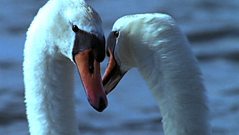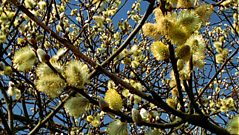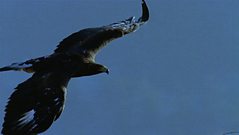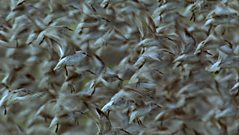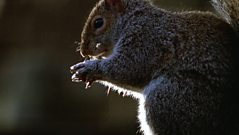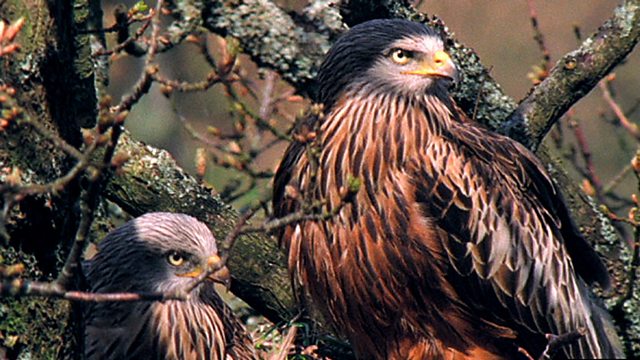
Rare raptors
Red kites and goshawks rear their chicks in Welsh woodlands.
Above a Welsh oak woodland, a pair of red kites perform elaborate aerial displays. They are the most acrobatic and easily identifiable of all the raptors in Britain. In the 1930s, only a handful survived in Britain, all in the Dinas valley in Wales. Today there are 500, widespread across Wales, including 150 breeding pairs. Both sexes have the chestnut red plumage for which they are named, the females are slightly lighter. Once a pair has shared the task of nest-building, the female will lay one or two eggs, which, if all goes well, will hatch five weeks later. High in a nearby Douglas fir, other raptors are well advanced. Three goshawks chicks have hatched, and two are already gaining their darker juvenile plumage. Their younger sibling is still downy white. The chicks are growing fast and the parents are kep busy providing them with ready-plucked meals. At his favourite plucking post, the male plucks the feathers from a pigeon he's caught and is scarcely finished before the female swoops down to carry his offering back to the chicks. Pulls pieces of meat off, she feeds the youngest chick first, but often when there are several chicks, the smallest gets pushed aside and becomes a runt. If food is scarce, the youngest might not survive to fledge.
Duration:
This clip is from
Featured in...
![]()
大象传媒 Nature
Be captivated, informed and inspired by the world's wildlife.
More clips from SPRING
-
![]()
Ocean food chain
Duration: 01:31
-
![]()
Swan courtship
Duration: 01:56
-
![]()
Scilly birds
Duration: 01:26
-
![]()
Pussy willow
Duration: 00:44
More clips from Living Britain
-
![]()
Winter scavengers—DEEPEST WINTER
Duration: 01:20
-
![]()
Winter waders—DEEPEST WINTER
Duration: 02:06
-
![]()
Springing to life—DEEPEST WINTER
Duration: 03:42
-
![]()
Industrial age otters—DEEPEST WINTER
Duration: 00:58



